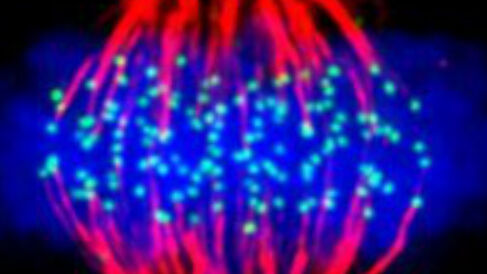
Congratulations to Eelco Tromer who is part of a research team that has been awarded the 2019 Cozzarelli Prize for the Biological Sciences.
The Cozzarelli Prize is awarded annually by the American National Academy of Sciences (NAS) to six research teams whose articles in the journal PNAS have made outstanding contributions to their fields. Each team represents one of the six NAS classes: Physical and Mathematical Sciences; Biological Sciences; Engineering and Applied Sciences; Biomedical Sciences; Behavioural and Social Sciences; and Applied Biological, Agricultural, and Environmental Sciences.
Eelco Tromer, Herchel Smith Postdoctoral Research Fellow in the Waller Group, and his former colleagues Berend Snel and Jolien van Hooff at Utrecht University and Geert Kops at the Hubrecht Institute are to receive the Biological Sciences prize for their publication "Mosaic origin of the eukaryotic kinetochore".
Eelco commented: "To me, winning the Cozzarelli Prize highlights that others appreciated our efforts to study the evolution of the kinetochore at a very detailed level, and that our approach is set to provide more insight into how other key eukaryotic structures evolved."
When eukaryotic cells evolved from prokaryotic ancestors, they vastly increased in complexity. How many of the typical eukaryotic features emerged during this process remains unclear. In their prize-winning publication, Eelco and his colleagues reconstructed the origin of one such feature, the kinetochore, a large proteinaceous structure that drives separation of chromosomes during cell division.
The authors found that the proteins that make up the kinetochore are of mosaic origin: some have relatives in different eukaryotic or prokaryotic cellular processes, whereas others are unique to the kinetochore. Nevertheless, many kinetochore proteins share part of their evolutionary trajectories, arising from ancient gene duplications within the kinetochore. The results suggest that the kinetochore originated by recruiting proteins globally and then expanded by duplicating them locally, characterising one of the modes by which key eukaryotic systems evolved.
"The work in this article is the result of intense collaboration with my former colleague and shared first author, Dr Jolien van Hooff. It is great to see that our different expertise facilitated the integration of many different types of sequence and structural data, leading to such a comprehensive understanding of kinetochore evolution, which will hopefully be an inspiration to many other researchers interested in the origin of eukaryotes," said Eelco.
"This article is also the epitomy of most of my thesis research performed at the University of Utrecht, and I was fortunate enough to be able to finish the final analyses for this manuscript here in the Department of Biochemistry. As such, Cambridge deserves some credit for this work as well!"
The Cozzarelli Prize was established as the PNAS Paper of the Year Prize in 2005 and renamed in 2007 to honour former PNAS Editor-in-Chief Nicholas R. Cozzarelli (1938-2006). Elected to the NAS in 1989, Dr Cozzarelli pioneered the study of the enzymes that control the coiling and knotting of DNA. As PNAS Editor-in-Chief, he created the Direct Submission track, diversified the Editorial Board to include all scientific disciplines, introduced an open access publishing option, and added non-research content to make the journal, and science, more accessible. In honour of Dr Cozzarelli, the award is presented to researchers that share his uncompromising scientific standards, his dedication to advancing scientific knowledge, and his enthusiasm for an "upstream swim".
